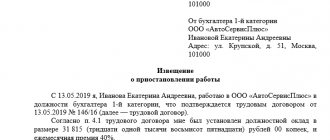Civil relations
Under a contract for the carriage of goods, the carrier undertakes to deliver the goods to the destination, and the sender undertakes to pay the established fee for the carriage of goods.
The carrier's liability for loss, shortage and damage (spoilage) of cargo or luggage is provided for in Art. 796 of the Civil Code of the Russian Federation.
The carrier is responsible for failure to preserve the cargo that occurred after it was accepted for transportation and before delivery to the consignee, unless he proves that damage (damage) to the cargo occurred as a result of circumstances that the carrier could not prevent and the elimination of which did not depend on him (clause 1 of Art. 796 of the Civil Code of the Russian Federation).
In case of damage (damage) to the cargo, the damage caused during the transportation of the cargo is compensated by the carrier in the amount by which its value has decreased, and if it is impossible to restore the damaged cargo, in the amount of its value.
The cost of the cargo is determined based on its price indicated in the seller’s invoice or provided for in the contract (paragraph 3, 5, paragraph 2, article 796 of the Civil Code of the Russian Federation).
Who should record cargo damage, commission
To certify the fact of cargo damage and draw up the corresponding act in the company, you need to promptly create a special commission. It should include employees from several departments of the enterprise who have sufficient professional training and qualifications to certify damage to the goods (for example, an engineer, technologist, sales specialist, lawyer and accountant).
The number of commission members is at least two people, and among them it is necessary to highlight the chairman and ordinary members. The Chairman will bear maximum responsibility for checking the cargo and the contents of the report.
Documentation of operations to obtain compensation from the carrier
The conclusion of a contract for the carriage of goods is confirmed by a waybill (bill of lading or other document for the cargo provided for by the relevant transport charter or code).
Before filing a claim against the carrier arising from the transportation of cargo, it is mandatory to present a claim to him in the manner prescribed by the relevant transport charter or code (clause 1 of Article 797 of the Civil Code of the Russian Federation).
In addition, if the cargo is damaged, a report is drawn up, which is attached to the claim presented to the carrier.
So, for example, if delivery was carried out by road, then in this case:
- The consignment note is drawn up by the shipper, unless otherwise provided by the contract for the carriage of goods (clauses 1, 2 of Article 785 of the Civil Code of the Russian Federation, clause 6 of the Rules for the carriage of goods by road, approved by Decree of the Government of the Russian Federation of April 15, 2011 N 272 (hereinafter referred to as the Rules for Transportation cargo by road)).
- The procedure for filing a claim is given in section. VII Rules for the carriage of goods by road.
- If the cargo is damaged, a report is drawn up, which is attached to the claim presented to the carrier (clause “c”, clause 79, clause “e”, clause 88 of the Rules for the carriage of goods by road). The procedure for drawing up an act and filing claims is given in section. VII Rules for the carriage of goods by road.
How to support the document
If possible, any additional evidence of damage to the cargo should be attached to the report:
- photos;
- video;
- written testimony of eyewitnesses, etc.
Information about these certificates must be included in the act. In the future, they can help to objectively determine the cause of cargo damage and the responsible party.
Such evidence is especially relevant when using the services of carrier companies.
In such cases, both the transporter and the supplier may be assigned as the culprit for damage to the delivered goods.
Accounting
Ownership of the finished product passes to the consignee (buyer) upon receipt of it from the carrier; therefore, proceeds from the sale cannot be recognized in the consignor’s accounting records for a certain time.
The cost of finished products transferred to the carrier is reflected in the debit of account 45 “Goods shipped” in correspondence with the credit of account 43 “Finished products” (Instructions for the use of the Chart of Accounts for accounting financial and economic activities of organizations, approved by Order of the Ministry of Finance of Russia dated October 31, 2000 N 94n ).
The cost of damaged finished products that cannot be restored is written off by the shipper from account 45 to the debit of account 94 “Shortages and losses from damage to valuables” (Instructions for using the Chart of Accounts).
After the carrier acknowledges the claim, the organization makes an entry in the debit of account 76 “Settlements with various debtors and creditors”, subaccount 76-2 “Settlements on claims”, in correspondence with the credit of account 94 for the amount of the book value of damaged finished products.
The difference between the amount of compensated damage and the book value of damaged finished products is other income for the shipper, which is reflected in the credit of account 91 “Other income and expenses”, subaccount 91-1 “Other income”, and the debit of account 76, subaccount 76-2, in the period of recognition of the claim by the carrier (clauses 2, 7, 10.2, 16 of the Accounting Regulations “Income of the Organization” PBU 9/99, approved by Order of the Ministry of Finance of Russia dated 06.05.1999 N 32n).
The receipt of funds from the carrier to compensate for the damage caused to the organization is reflected in the debit of account 51 “Settlement accounts” and the credit of account 76, subaccount 76-2 (Instructions for using the Chart of Accounts).
How to file a claim?
If all the documents have been collected, it’s time to start drawing up the claim itself.
You can use the “PEC” form for a claim; it can be downloaded from the company’s website. In most cases this will be sufficient. However, we recommend that you draw up the document yourself or entrust its drafting to an experienced lawyer in order to take into account all the individual characteristics of your situation and properly justify the losses incurred. To write, you can use our step-by-step instructions:
- We create the header of the document.
It must contain information about the applicant and the recipient of the claim. The more contact information you provide, the easier it will be to contact you. The header should look like this: To the Director of PEK LLC I.V. Firsovoy Moscow, 1st Vyazovsky Ave., 4 From: Ivan Ivanovich Ivanov Address: Taganrog, Uritskogo Ave., 3 Tel.: 8-123-456-78-90 Email address - In the middle of the line is written the name of the document: claim.
- We describe the essence of the complaint. All events and documents should be indicated, starting from the conclusion of a transport services agreement with PEC and ending with the preparation of an acceptance certificate or discrepancies:
- details of the agreement concluded with TC "PEK";
- description of cargo damage or listing of lost property with reference to the discrepancy report;
- calculation of the amount of damage with reference to supporting documents.
- We substantiate the stated requirements. Here are references to laws and terms of the contract that give the right to demand compensation for losses from the carrier. In addition to compensation for the cost of lost or damaged cargo, you can claim other losses (for example, harm to health due to medicine delivered at the wrong time).
- We list claims for damages. You should also provide details for a refund.
- In the final part, it is necessary to indicate the readiness to go to court if the requirements stated in the complaint are not met.
- At the end of the document, the application documents are listed, dated and signed.
Sample claim
Corporate income tax
The amount of compensation for damage is taken into account as part of non-operating income on the basis of clause 3, part 2, art. 250 Tax Code of the Russian Federation.
The specified income is recognized on the date the carrier recognizes the amount of compensation for damage (clause 4, clause 4, article 271 of the Tax Code of the Russian Federation).
Chapter 25 of the Tax Code of the Russian Federation does not contain a direct rule allowing the cost of damaged finished products, which are compensated by the carrier, to be included in expenses.
At the same time, in our opinion, the organization, in connection with the recognition of non-operating income in the form of amounts received as compensation for damage, has the right in the same reporting (tax) period to take into account the cost of damaged finished products as part of non-operating expenses on the basis of paragraphs. 20 clause 1 art. 265, paragraph 1, art. 272 of the Tax Code of the Russian Federation (as other justified expenses associated with receiving non-operating income). Similar explanations are given, for example, in Letters of the Ministry of Finance of Russia dated April 27, 2020 N 03-03-06/1/34033 (on compensation for losses from theft), dated June 19, 2018 N 03-03-07/41741 (on compensation for losses in the event of loss of property rights).
The legislative framework
To use transport services, a cargo transportation contract is concluded between the shipper and the transport company (hereinafter referred to as TC). The terms of this agreement must comply with the law and in no case derogate from the rights of the parties to the agreement. Therefore, first of all, it is necessary to study the legislative framework and rely on the provisions of the law if the terms of the contract contradict them.
Thus, in the form of a contract for transport and forwarding services offered by , there is a provision that disputes with individuals should be considered:
- in the Basmanny District Court of Moscow, if the dispute is subject to consideration in the district court;
- from the magistrate of court district No. 360 in Moscow, if the dispute is subject to consideration in the Magistrate's Court.
Meanwhile, Article 17 of the Law “On the Protection of Consumer Rights” and Article 29 of the Code of Civil Procedure of the Russian Federation provide the plaintiff (consumer) with the right to choose jurisdiction. Consequently, this condition of the contract violates the law and can be challenged in court.
So, what legislative acts should you pay attention to when concluding a cargo transportation contract:
- Civil Code of the Russian Federation. Contains general provisions on the provision of services by cargo carriers, as well as the essential terms of the cargo transportation contract;
- Air Code of the Russian Federation. Rules for the carriage of goods by air and the procedure for appealing the actions of the Transport Committee in case of violation of the terms of the contract of carriage by air;
- Law of the Russian Federation dated 02/07/1992 No. 2300-1 “On the protection of consumer rights.” Consumer rights in case of violation of delivery terms by the contractor;
- Resolutions of the Plenum of the Supreme Court of the Russian Federation and other regulations specifying the provisions of the above laws.
Deadline for filing a claim
When complying with the claim procedure, deadlines play a huge role. The legislation regulates the deadlines for filing a claim, as well as responding to it.
The time limit for filing a claim depends on the type of transport used for delivery:
- 1 year for vehicles;
- 6 months for air transport;
- 6 months for railway transport, for fines and penalties - 45 days;
- 1 year for water transport.
As a rule, the period is calculated from the moment of planned or actual receipt of the cargo.
In accordance with Art. 797 of the Civil Code of the Russian Federation, the TC is obliged to respond to the claim within 30 days. If no response is received within this time, you can go to court.
How to submit a claim to TC PEC?
The claim must be submitted in paper form in person or by mail. The company itself also offers to send claims by e-mail, but in this case we recommend duplicating the claim on paper and sending it by Russian Post, because if you go to court, it may be difficult to prove compliance with the claim procedure via e-mail.
You can submit it in person through the PEC TC branch. To do this, you need to come there with two copies of the claim:
give one to a company employee, and ask for a receipt stamp on the second.
The claim should be sent by mail to the following address: 109428, Moscow, 1st Vyazovsky Ave., 4, by registered mail with acknowledgment of delivery.
How to file a claim in court?
If TC does not admit its guilt and refuses to fulfill the requirements specified in the claim against PEC, it will have to recover damages through the court. If all the necessary documents are available, the court will side with the consumer and make a decision to recover the claimed funds.
Important! A statement of claim is a more complex document, the drafting of which requires not only special legal knowledge, but also knowledge of judicial practice. Therefore, it is better to entrust the drafting of a statement of claim to experienced lawyers.
Contents and sample of the claim
In the statement of claim, as in the complaint to Rospotrebnadzor, it is better to focus on the violation of consumer rights: this will exempt you from paying state fees and will help you collect additional amounts from the shopping center in the form of fines and penalties. You can draw up a statement of claim based on an existing claim. The following changes will need to be made:
- The name of the court in which the claim will be filed is written in the header of the statement of claim. If the amount of claims stated in the claim does not exceed 100,000 rubles, then you should contact a magistrate. If the value of the claim is higher, the case will be considered by the district court. The applicant will become the plaintiff, and TC "PEK" will become the defendant;
- to the statement of circumstances in the complaint, a brief description of the process of pre-trial dispute resolution should be added: filing a claim and responding to it (if any);
- to the basic requirements you can also add a requirement for compensation for moral damage (based on Article 15 of the Law on the Protection of Consumer Rights), payment of a penalty in the amount of 3% of the cost of services for each day of delay (Article 28 of the Law on the Protection of Consumer Rights), on payment of a fine in the amount of 50% of the amount of declared claims for failure to comply with consumer requirements voluntarily (Article 13 of the Law on the Protection of Consumer Rights)
- attach all the documents that were attached to the claim, as well as the claim itself and the response to it.
Sample claim
Procedure for filing a claim
To file a claim in court, you must:
- If the application is submitted in paper form, you need to print out the statements according to the number of persons participating in the case: for yourself, the defendant and the court. Copies of the attachments must also be printed for the court and for the defendant. The originals should be kept with you and will only need to be taken with you to the court hearing.
- Take to the post office a copy of the claim for the defendant along with the attachments and send it to the address: 109428, Moscow, 1st Vyazovsky Ave., 4 by registered mail with acknowledgment of delivery. Receipts of delivery will also need to be attached to the claim in court.
- Apply to the court. This can be done in three ways:
- come to the court office and hand in the documents in person. Then the secretary will mark your copy as having been received and take away the claim along with all the attachments;
- send the claim by registered mail;
- use the electronic system of GAS Justice and send documents electronically in PDF format. This will require authorization through the ESIA.
The consideration of the case will take about two months, unless it is necessary to appeal the court decision to a higher authority.










